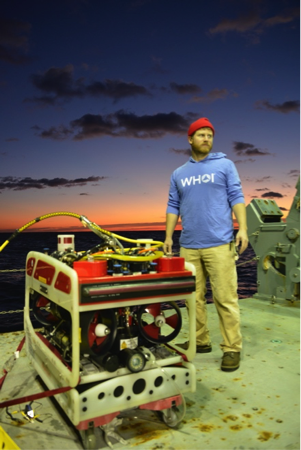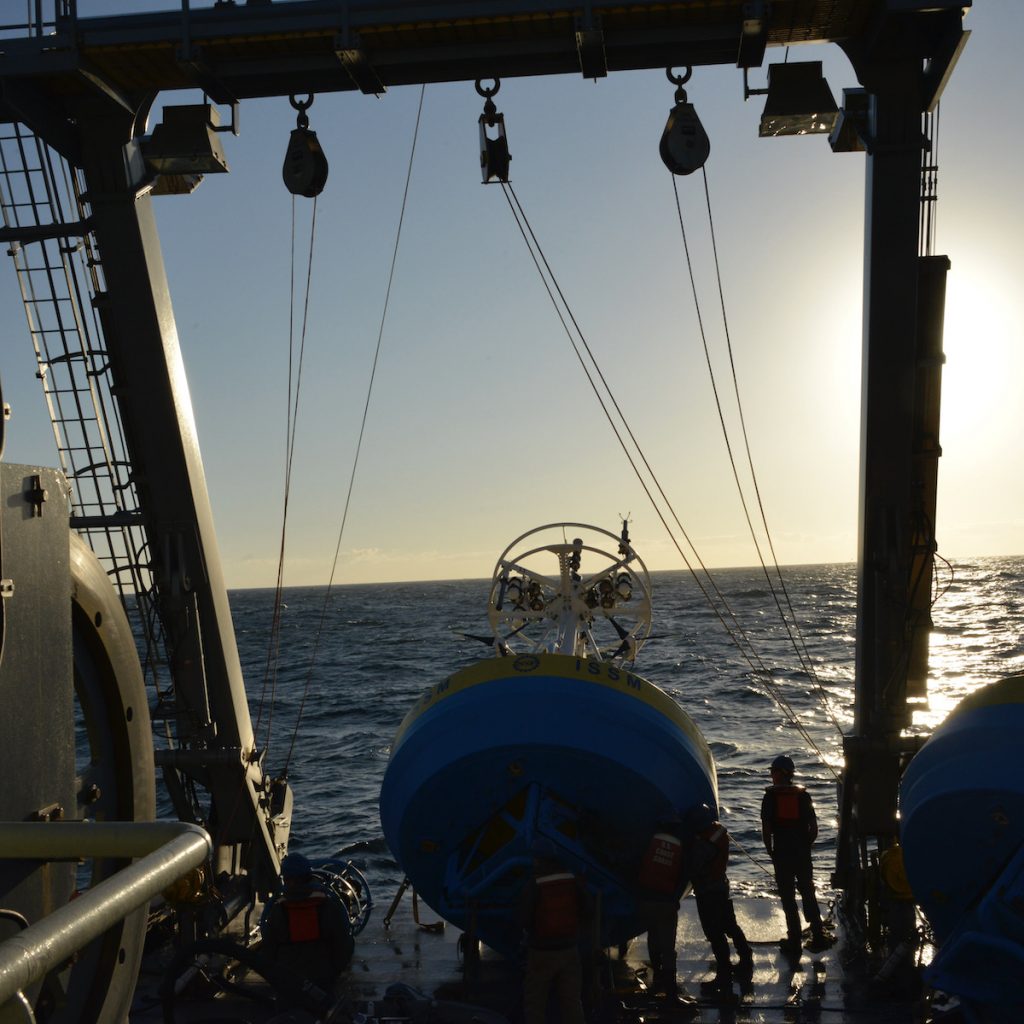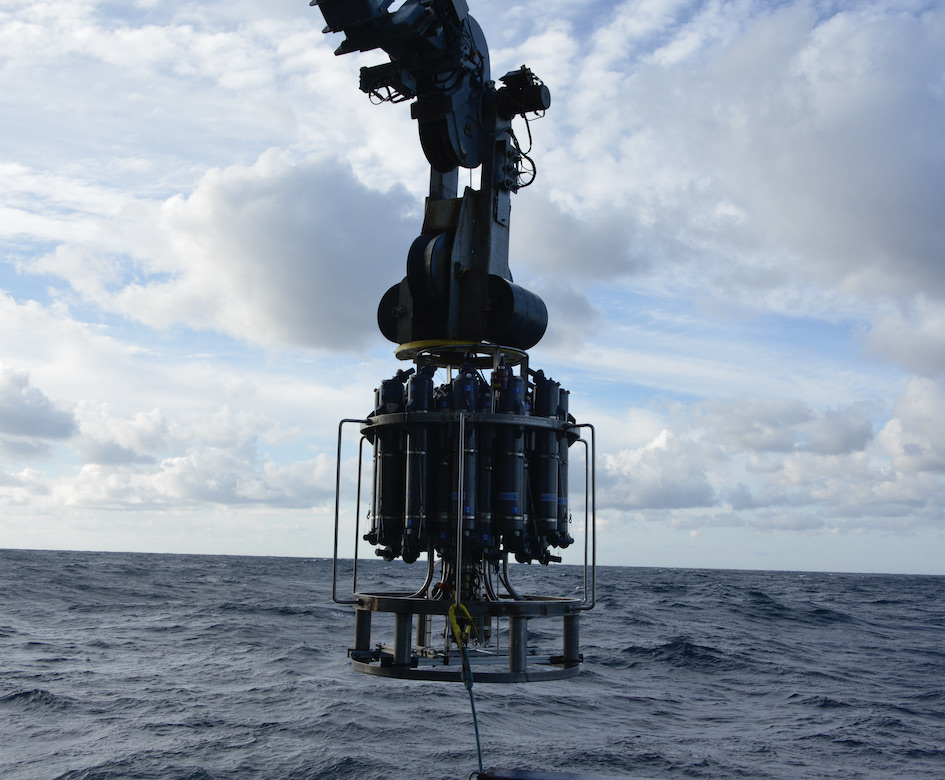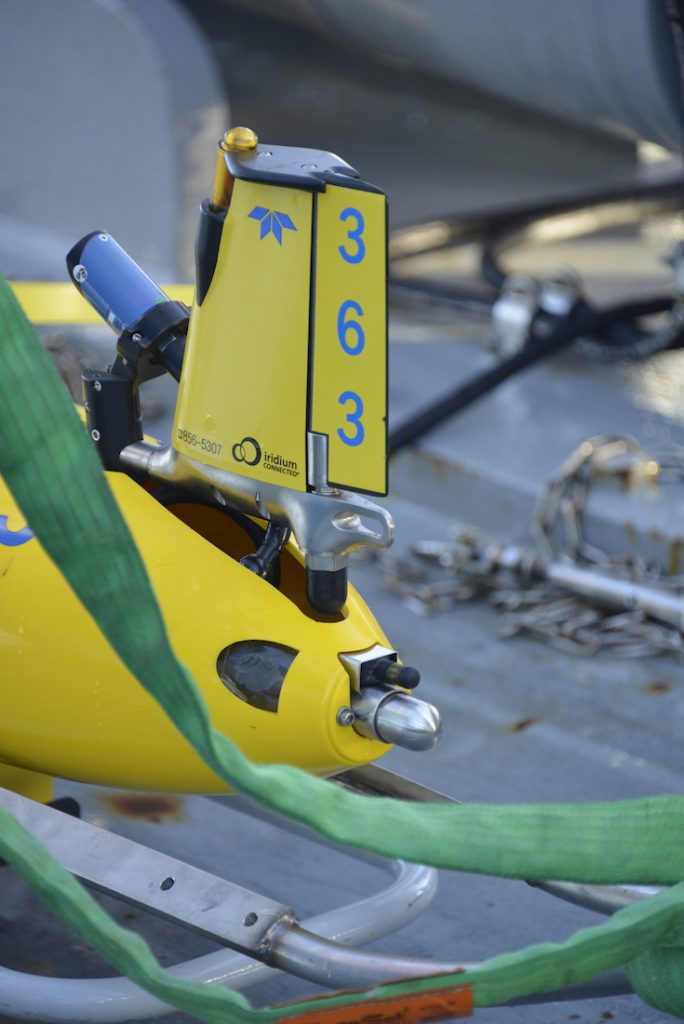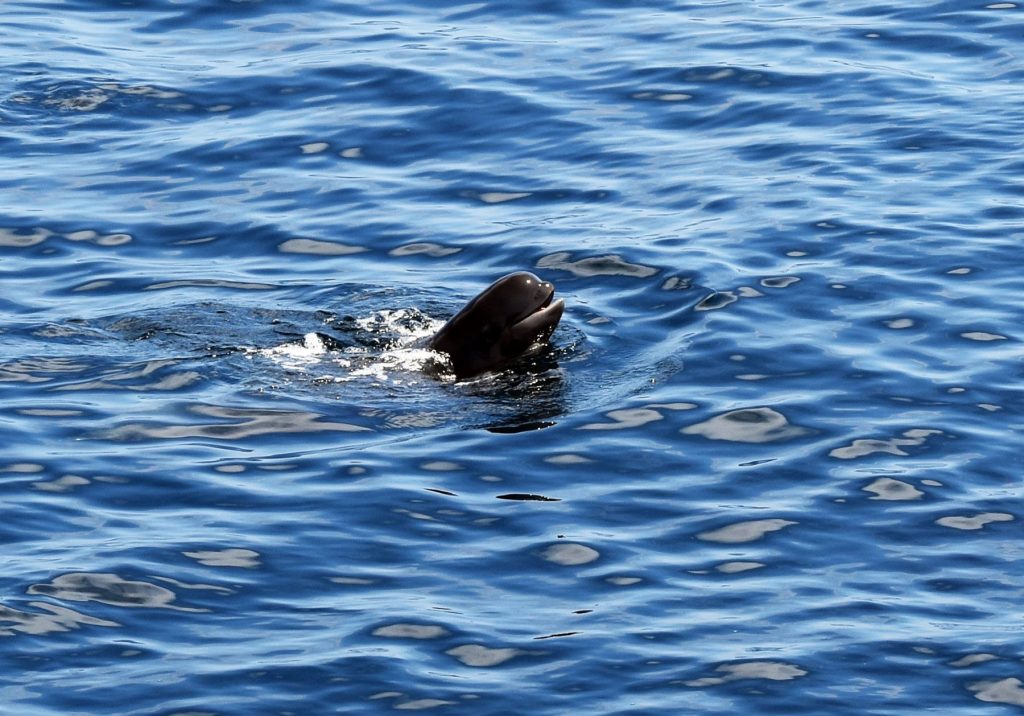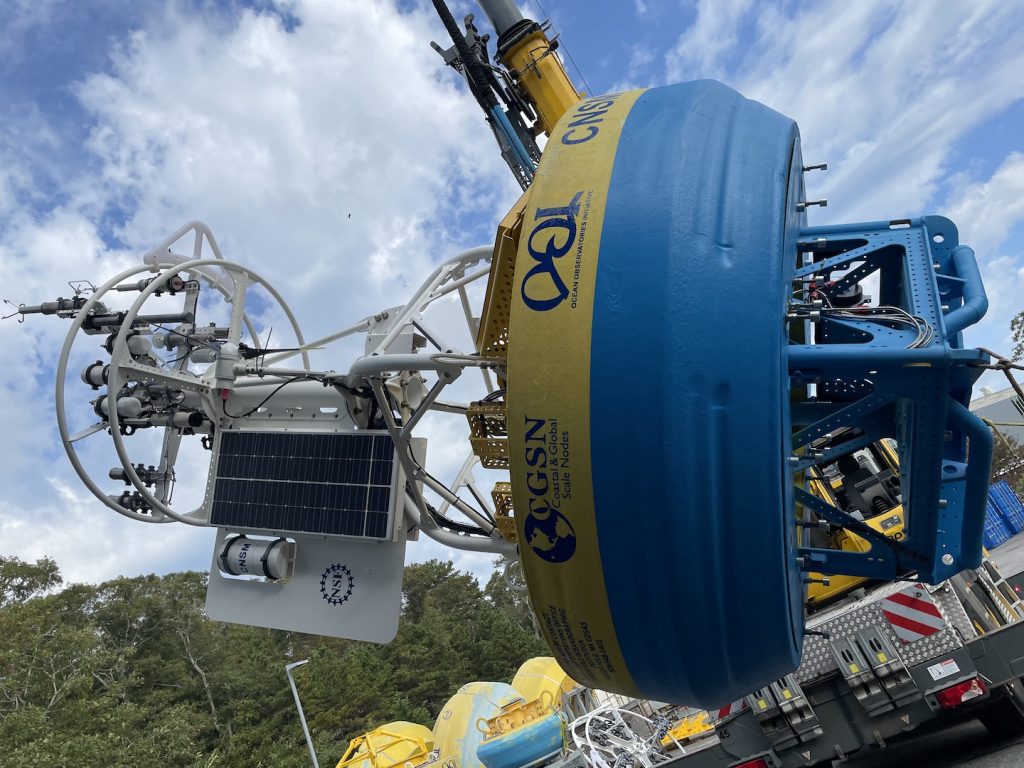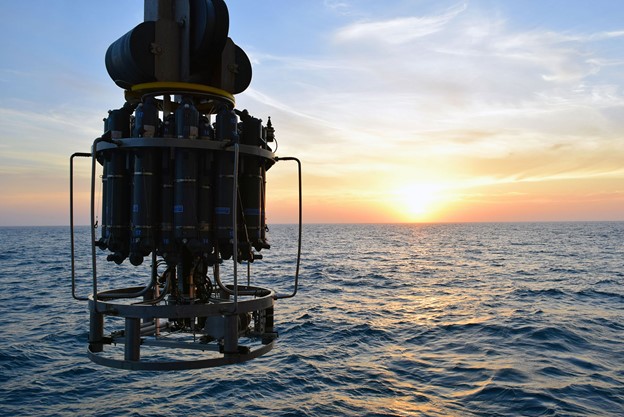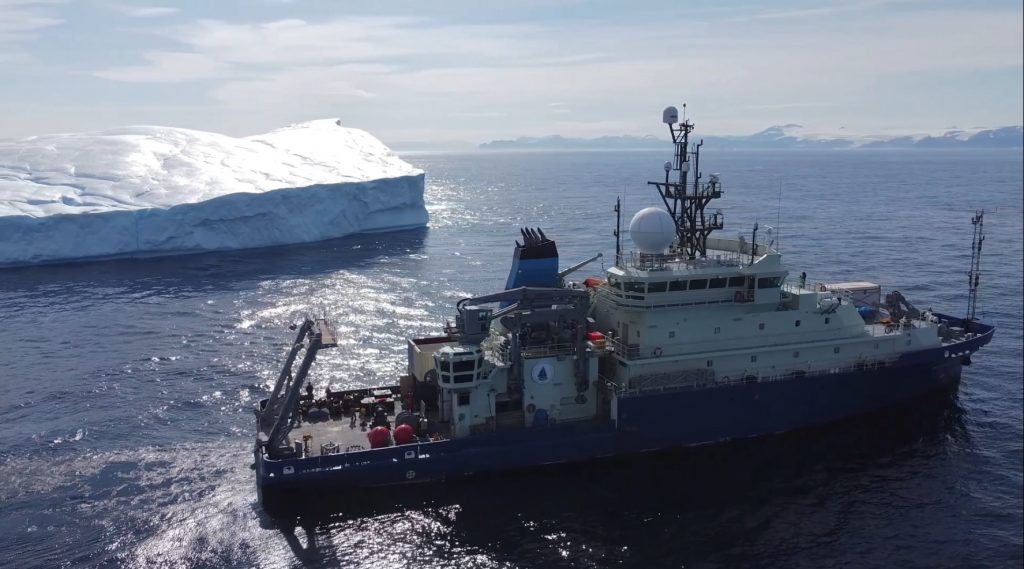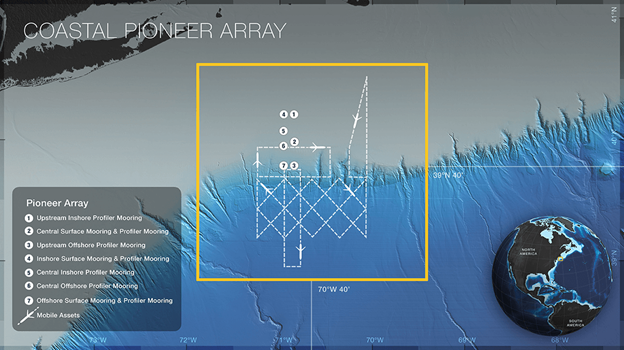Pioneer 17
Rosette Recovered
The team was on deck as the sun came up to prepare a remotely operated vehicle (ROV) for a rescue mission. During an expedition earlier this summer aboard the R/V Neil Armstrong, a CTD rosette (pictured below) was lost. The Pioneer 17 cruise with its ROV onboard provided the perfect opportunity to recover the CTD.…
Read MoreAnother Mooring Dispatched
Today was a gift for early risers. The sun was bright, the weather comfortable. This was fortuitous, for the team was on the stern deck of the R/V Neil Armstrong as the sun rose at 6 am. They diligently worked to finish attaching the various parts that ultimately comprise the Inshore Surface Mooring (ISSM). Deployment…
Read MoreCross-Shelf CTD Survey and Halloween
The waves and winds are still too intense to safely deploy a mooring today, so we are conducting a cross-shelf CTD survey from Pioneers’ Upstream Offshore (450 meters depth) site to the Upstream Inshore (95 meters depth) site. This is one of OOI’s objectives and provides a general scientific assessment of the shelf break area. …
Read MoreGlider Day at Pioneer 17
Inclement weather has made us slightly adjust our schedule of what to put into the water each day. Today started off with a glider deployment. Gliders are an integral part of the OOI and are operated at both the Coastal and Global Arrays. Gliders at the Coastal Arrays (Pioneer and Endurance) sample the water space…
Read MoreFinally at Sea
The 14 members of the Pioneer 17 science party were all onboard the R/V Neil Armstrong at 9 am sharp on Friday 29 October. All were eager to head out to the array, which is about 75 nautical miles south of Martha’s Vineyard after a three-day weather delay caused by a roaring nor’easter. The storm…
Read MoreCruise Update
The Pioneer 17 team of scientists and engineers departed aboard the R/V Neil Armstrong from Woods Hole, MA for the Pioneer Array, 75 nautical miles south of Martha’s Vineyard on 29 October. Our departure was originally scheduled for three days earlier, but the weather kicked up and presented challenges to conduct the recovery and deployment…
Read MoreBefore Departure
Once recovered, the moorings are refurbished for the next recovery and deployment mission. This work is done at the Quissett campus of Woods Hole Oceanographic Institution, which is about two miles from the Woods Hole dock. Prior to Pioneer 17, three coastal surface moorings had to be uploaded on a flatbed truck and transported to…
Read MoreInstruments Post 1
During the Pioneer 17 expedition, the team will deploy and recover three coastal surface moorings, deploy six and recover five coastal profiler moorings, and recover one glider. The team will also be conducting missions with autonomous underwater vehicles, pictured above, to take oceanographic observations in the vicinity of the moorings. These observations serve to validate…
Read MoreR/V Neil Armstrong
The R/V Neil Armstrong is a state-of-the-art oceangoing research vessel. The ship is 238 feet long, can sustain speeds of 10 knots, has a range of 11,500 nautical miles, and can remain at sea for up to 40 days. Named for the American hero whose “small step” provided humanity with a new perspective on our planet, this vessel carries on its namesake’s legacy of exploration.
Read MoreCoastal Pioneer Array NES
The Coastal Pioneer Array is located off the coast of New England, about 75 nautical miles south of Martha’s Vineyard. The Continental Shelf-Slope area in this region is highly productive. It serves as a dynamic intersection where ocean currents meet in weather-like “fronts,” and where nutrients, pollutants, and other properties are exchanged between the coast and the deep ocean
Read More
